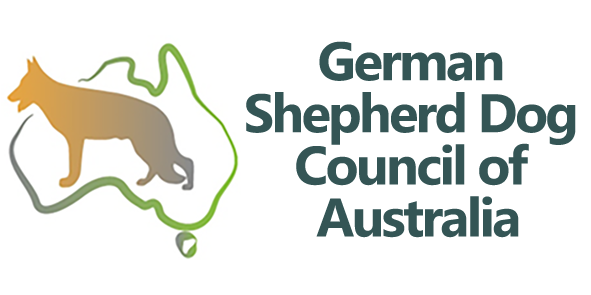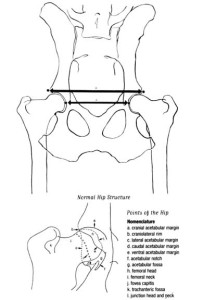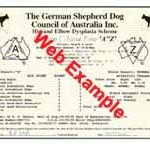The GSDCA conducts a Hip Dysplasia (HD)/Elbow Dysplasia (ED) Control Scheme in order to ensure that the breed average scores for hips and elbows for the German Shepherd Dog remain as low as possible. This in turn ensures that the soundness of the breed progresses.
To participate, the owner must be a member of an affiliated Member Club. Animals must be minimum 12 months of age and owners should obtain an application form from their Member Club prior to visiting the Vet for x-rays. The GSDCA scheme has been very successful in reducing the incidence of hip and elbow dysplasia within the breed in Australia since its inception.
For further information regarding participation please refer to the Regulations Manual, Section 3.1 Eligibility to Participate in the GSDCA Breed Improvement Schemes.
To apply for a GSDCA contract or submit x-rays for scoring, visit our x-ray centre
Please refer to the Regulations Manual, Section 3.3 GSDCA HD/ED Control Scheme for information about the scheme. This details the procedure for x-raying, results, qualifications, re-submission of x-rays, appeals and the publication of statistics etc.
Dogs Australia (Australian National Kennel Control) Regulations
Notice to GSD Breeders about Requirements to Comply with HD/ED Control Schemes to enable ANKC Litter Registrations. For the regulations for registering a litter please click on this link below to the Dogs Australia website. (See ANKC Regulation 8.8.4 re litter registration limitations.)
GSDCA was able to introduce requirements in 2011 for the registration of all German Shepherd Dog litters in Australia, which include mandatory x-ray of breeding partners prior to breeding and registration of offspring. The current rules have been in force since 2017 and specify maximum scores for both parents. A passing score for both hips and elbows is also a requirement for dogs to be classified under the GSDCA Breed Survey scheme.
Hip and Elbow certificate
Once the Hip and Elbow x-rays have been received from the GSDCA’s reader, a certificate is issued to the owner of the dog, explaining the scores achieved.
The certificate also carries the GSDCA ‘A’ stamp and the ‘Z’ stamp to indicate that the dog has passed the HD/ED Control Schemes (see certificate).
Current requirements for ‘A’ and ‘Z’ stamps, (and also for Dogs Australia litter registration) are:
Hips: maximum score of 8 points per hip, with no more than 3 points in each scoring area, or for imported animals a result considered suitable for breeding in the country of origin.
Elbows: A grading of Normal, near Normal or Grade 1 for elbows, with UAP not present, or for imported animals a result considered suitable for breeding in the country of origin.
Publication of Hip and Elbow results
The HD and ED Control Scheme results are published each year however no results of animals deemed to have failed the GSDCA HD/ED Control Schemes will be published.
Twice yearly an updated list of prgeny results will be published on this website for the HD/ED Control Schemes results which is broken down into different categories those being:
- Hips
Progeny results for ALL sires with 10-19 progeny
Progeny results for ALL sires with 20 plus progeny
Progeny results for CURRENT sires with 10-19 progeny
Progeny results for CURRENT sires with 20 plus progeny - Elbows
Progeny results of ALL sires with more than ten progeny according to bloodlines
Progeny results of ALL sires with more than ten progeny according to percentage of normal
Progeny results of CURRENT sires with more than ten progeny according to bloodlines.
Progeny results of CURRENT sires with more than ten progeny according to percentage of normal
The tables for past results are available here.
HD/ED Control Scheme medals (for breeders)
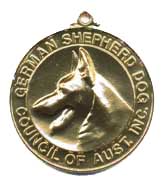
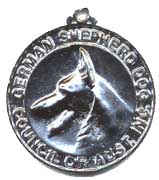
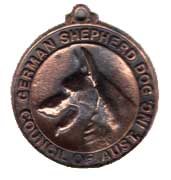
The kennels being awarded the Hip Dysplasia Control Scheme Medals are published in the National Magazine following their presentation.
Comparison of the GSDCA elbow scheme with the SV scheme
Below is a link to a document which compares the Elbow Dysplasia Control Scheme conducted by the SV with the GSDCA Control Scheme, written by former NBC Chairperson Mrs Joylene Neddermeyer. The summary table below is also included in the link, for easy reference.
Comparison SV and GSDCA ED Schemes

